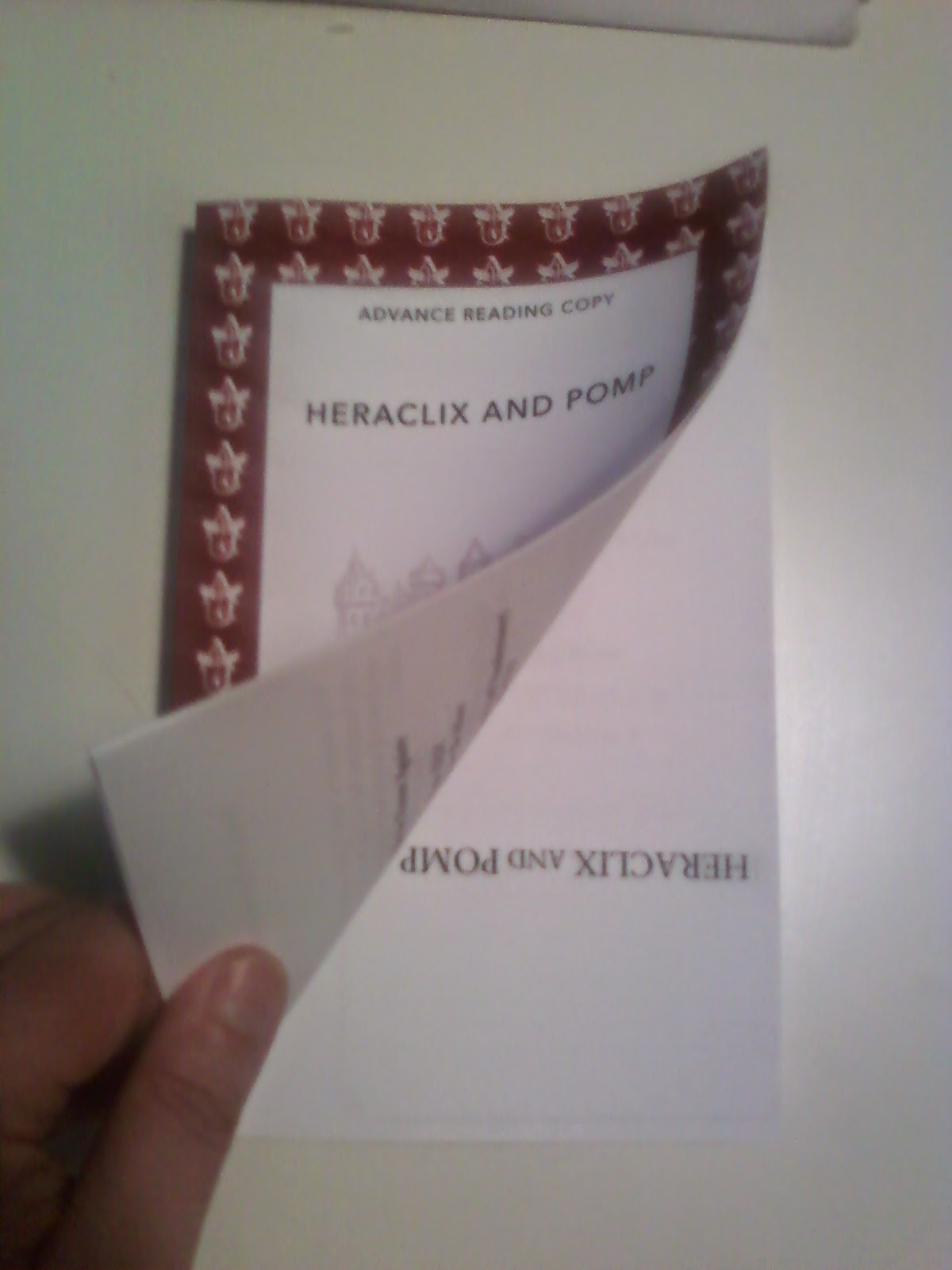Allusion is not Illusion
You'll pry my books off my cold, dead body. By the time you shift them all I'll be flat and dessicated.
Currently reading
Friends, enemies, suck-ups, whatever

Are you really interested in Kippenberger? Do you already know quite a bit about his life and art? Do you like him a lot? This book may make a great addition to your art library.
If the answer to those questions is "no" then I'm not sure what the appeal of this book would possibly be for you. It consists of numerous "conversations" (many conducted by email) with artists, curators, gallerists, et al individuals who knew Kippenberger. Most of these people aren't especially interesting in their own right, at least not for their writing. The interview questions are pretty standard ones like "How did you meet Kippenberger?". Kippenberger himself was an interesting guy, by all accounts, but he was dead before this book came out and so his conversation is all at second, as remembered usually years later. Also, Kippenberger was an usually public person; that is, not someone who had a lot of hidden private aspects. All the interviewers say pretty much much the same things about him and describe his personality in the same way: narcissistic, insecure, needing to be the center of attention, high energy, drinking a lot. So the interviews are frankly rather repetitive.
There's not much in the way of images here. There is a photo or two paired with each interview, often social snapshots not intended to have aesthetic merit. The art produced by Kippenberger and the others mentioned in the book is hardly shown at all, usually somewhat visible in the background behind people at an art opening or something like that.
 7
7
Never touch a gift girl in the mouth

Melanie is content with her life. School five days a week, always looking forward to days with her favorite teacher, who tells the best stories. A sort-of-best-friend, an annoying boy who makes funny of her. Her own room, with a bed and a wheelchair and armed soldiers who immobilize her and call her a fucking abortion. Normal life. But there's that secured door at the end of the hall, and kids who go through it never come back. And one day it's Melanie's turn.
 9
9
You can keep the Castle
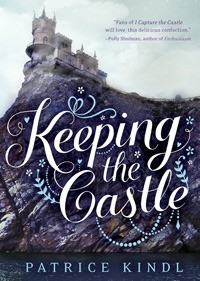
Fluff. Unsympathetic fluff, at that. I did not like Anthea, our "heroine" or care about her "plight" of not having enough money to support the desired lifestyle of the elite and having to get by with just her beauty, fancy house, loyal servants, and supportive mother.
 7
7
Major Exhibit of Italian Futurism 1909-1944
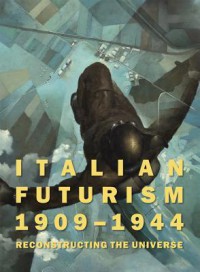
I have been increasingly appreciative of 20th-century art over the past several years so I thought the companion volume to the Guggenheim's recent and highly lauded exhibit would be a good opportunity to revisit Futurism and see if I found it more appealing.
In some senses, yes: there were a number of specific pieces that I liked, and I found some of the ideas interesting. Overall, it is still not a favorite school for me, which I'm okay with; it would be a tad uncomfortable to really like a bunch of conceited, pretentious loudmouths who were enthusiastically Fascist, warmongering, misogynist, and convinced of their genius and qualifications to govern society. 
My high rating is for the book itself, not an indication of my extreme fondness for the style. Don't rush out and buy me a Boccioni for Christmas. (Actually, please do, but know that I'm probably going to resell it.) The reproductions are of excellent quality and variety, including more ephemeral materials that are less easy to find for online viewing. The analytic essays are intelligent and concise and neither vilify the artists nor shy away from addressing difficult issues. 
Just as a final point of interest: this exhibition and the book were underwritten by LaVazza. A note from a spokesperson for the company states that they're trying to expand their American market and thought this would be a nice way to do so. I'm trying to imagine an American food producers considering ways to increase appeal abroad and deciding, "I know, we'll sponsor a modern art exhibit!"
But I'm always up for a coffee.
Half World more than half good
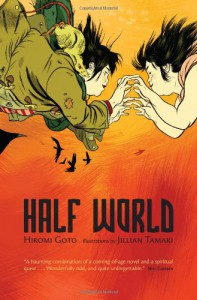
I almost gave up on this during the very flat (despite hideous monsters and grossness) prologue which explains the three worlds: Life (our world), Spirit (a heaven-like realm where souls are healed before being reborn), and the Half World, which is supposed to be like Purgatory but isn't because by some mischance the three worlds were completely separated so now those in the Half World are trapped in an endless cycle of experiencing their trauma over and over, forever. We open with a pair of young lovers attempting to escape this world and being caught by the revolting Mr Glueskin and his minions.
Luckily, this intro is short and the action quickly takes off. Melanie is a Bastian Bux sort of heroine: fat, plain, sullen, fond of books but no good at school, no friends, no special talents. But she does really love her mother, the feeble alcoholic Fumiko, and when she comes home to find Fumiko missing and receives a mysterious phone call telling her to come to the overpass and find the 4th door in the tunnel OR ELSE she doesn't hesitate. And soon she learns that more is at stake than just her mother's fate...
Melanie is a good protagonist. She is sympathetic even though she isn't particularly likable. She's kind of a bitch sometimes, whining and ungrateful. Poor Jade Rat... This book had more horror-y grossness than I was expecting, but it fit in with the Bosch-hell vision of the tortures of the damned. There are a few things that were frustratingly unexplained, especially (view spoiler) but I liked the overall conception.
I would have liked more art like the cover, as well; despite being listed as "illustrated" there are only a few small black-and-white drawings.
 4
4
Strange Horizons Seeking Reviewers
In a move that is basically the opposite of what I was complaining about, another SFF venue is actively and openly seeking a broad range of reviewers.
Please share this link.
 2
2
Excellent overview of German Expressionism

I would highly recommend this for layperson wanting a reasonably comprehensive introduction to Expressionist art and its historical and cultural context. This book presents a fairly thorough sampling of the major artists and groups, and can be understood without much background in art theory. The author occasionally lapses into jargonish phrases such as "autonomous colors" but for the most part technical elements are clearly explained. The art reproductions are numerous and of high quality.
After the introduction, the chapters are arranged by groups or cities. Each begins with an overview and is followed by detailed treatments of the major artists, with a small amount of pertinent biographical information. Thus, we have
Die Brücke Group: Ernst Ludwig Kirchner, Erich Heckel, Karl Schmidt-Rottluff, Max Pechstein, Otto Mueller.
Kirchner's portrait of the group
Northern German Expressionism: Emil Nolde, Paula Modersohn-Becker, Christian Rohlfs
Paula Modersohn-Becker - Pram, children and goat
The Blaue Reiter: Wassily Kandinsky, Franz Marc, Alexei von Jawlensky, Gabriele Munter, Marianne von Werefkin
Wassily Kandinsky, The Blue Rider
Rhenish Expressionism: August Macke, Heinrich Campendonk, Wilhelm Morgner
Campendonk, Bucolic Landscape
The Subject of the City: Max Beckmann, Otto Dix, George Grosz, Conrad Felixmuller, Ludwig Meidner, Lyonel Feininger
Meidner, Burning City
Expressionism in Vienna: Oskar Kokoschka, Egon Schiele
Kokoschka, Lovers with cat
Obviously some of these individuals belonged to more than one group or location. And some who are grouped together had no contact with one another. Elger explains in the text which people influenced each other and when.
 9
9
Peregrinatio Sebaldi

This is a strange and melancholy journey, not really through Suffolk but through Sebald's mind. With poetry and pathos he narrates a wandering, but not random, series of extended meditations inspired by history and memory, local geography and phenomena, people he meets or sees on television, books he's read. We begin and end with Thomas Browne, moving in between from translation to experimentation, from Roger Casement to Dutch Elm Disease to the Troubles. We also return at times to the hospital room in which the narrator lies suffering from a vaguely described inertia, medical or mental. 
St Sebald, from whom the author's family name comes
There is a documentary called "Patience" based on or inspired by this book, I'll have to track it down. I'll also definitely be reading more Sebald. Perhaps After Nature as a paired reading with Against Nature? I'd also be interested in After Nature because it was translated by Hamburger, who was a personal friend with whom Sebald seems to have felt he had much in common (he visits him in The Rings of Saturn and discusses this). I'm also interested in reading his poetry, as I very much liked Kay Ryan's poem inspired by this book.
For W.G. Sebald, 1944-2001
This was the work
of St. Sebolt, one
of his miracles:
he lit a fire with
icicles. He struck
them like a steel
to flint, did St.
Sebolt. It
makes sense
only at a certain
body heat. How
cold he had
to get to learn
that ice would
burn. How cold
he had to stay.
When he could
feel his feet
he had to
back away.

Shrine of St Sebald with his relics, Sankt Sebalduskirche, Nuremberg.
(I've been there!)
Text:Ur

I would say "highly recommended" but these stories are definitely not going to be to everyone's taste. They are unusual, intelligent, often bizarre, sometimes plotless. But mostly awesome!
My very favorite was Toiya Kristen Finley's "Avatar of Background Noise". I was squeaking with excitement as I read it, even though trying to follow the multiple sets of incomplete embedded notes nearly gave me a headache.
Other stories I especially liked:
"Last Transmission or Man with a Robotic Ermine" by Joshua Cohen. Thanks for making me even more leery of the entire Mustelinae clan, Mr. Cohen!
"Fugue-State" by Brian Evenson. The end of the world may be pretty horrific, but don't worry, you'll hardly notice.
"The Devil Met Baldrick Beckenbauer" by Tom Miller. Dueling banjos, but with footnotes. Across time. By insane folklorists.
"Incipit" by Jay Lake and Ruth Nestvold. Enkidu as last Neanderthal.
"A Play for Boy and Sock-puppets" by E. Sedia. Don't let them speak for you.
"Bluecoat Jack" by Sarah Totton. Making things out of other people is wrong. So is opting out of life.
"Strangers on a Train" Tamar Yellin. Poor, poor Terri.
Will definitely be looking for more writing by all these talented people.Also now looking forward even more to soon reading editor Forrest Aguirre's new release Heraclix & Pomp.
Lastly, kudos to Jennifer Barnes, who did the layout; these non-standard formatting ideas often fail to work out they way authors imagine them, but in this case I found them very effective.
 6
6
Les Grands (but not so great) spectacles


Michael light, stokes 19
Pomp, marvels, commotion and incredible news, sensations, explosions and uproar, or artifice, distasteful magic and swindle, possibly even downfall--the very world >>spectacle<< still has a touch of the dubious about it.
Martha rossler, bringing the war home
Today, celebrities have become a genre in their own right, living images, attractions, exotic animals, public bodies, fantasies, patterns, names--they are the ghost patrolling in the mirror of the everyday world...
Andy warhol, Liz as cleoptra
There is much more.
George melies, livre magique
Melies and Maholy-Nagy, Hans Richter and Candida Hofer and Jonathan Meese, Nan Golden, Matthew Barney, Eadweard Muybridge and Ed Ruscha
Etienne-Jules Marey
Duchamp and Ernst and Ensor, Munch, Artaud, and Asger Jorn. Walter Benjamin. Vogue Covers. 
Jean tinguely, la vittoria
Too many artists and ideologues to list. Certainly too many to discuss in depth.
Picasso, Athlete
What there is not, is a sense of coherence, an overarching rubric that would connect all these pieces, ideas, and phenomenon. Some of the examples don't even seem to fall into the category of "spectacle," unless the word is being used to encompass everything one looks at, which would be to dilute the concept so extremely that it became meaningless.
For instance, this painting by Rene Magritte is included in the section on Melies.
I am certainly willing to accept that Magritte may have been influenced by Melies (I have never looked into the question so I cannot say if he was familiar with him) but that doesn't seem like a sufficient reason for him to be included in this already over-crowded gathering.
Ford beckman, Big nose
There are passels as well of postcards and sketches and pamphlets. A bit of pornography. (Honestly, once you've seen one of Export's "Genital Panic" photos you've seen them all, imo.)
My overall feeling was that anything that could possibly be included had been crammed in, to the detriment of the whole.
 3
3
Heraclix & Pomp, the ARCs have landed! (reblogged)
The ARCs for Heraclix & Pomp are here at Casa del Aguirre. Now, fair warning, the cover for the ARC is a little different than the cover for the finished work. It's a hint of things to come. Think of it as readerly foreplay. I've taken some images, which I'll show below, but keep in mind that I'm still working with a dumb-phone with a crappy camera. The central image of the cover is a little faint in the photos, but, hey, it's faint on the real thing, too. Subtle. Dignified. And stuff. You can preorder the book through your local bookstore or, if you don't have a local bookstore, you can preorder the hardcover for 25% off right now at Amazon. Either way, get your copy! Our release date is now October 14, so there's plenty of time, but the book distribution services really like it when people preorder. Still not sure about this whole thing? Go read an early review of the book here and aninterview with yours truly here. If historical fiction and fantasy are your thing, and if you like the writing of Gene Wolfe, I am told that you will really like this book.
Here is the cover:
And here I am, ready to have a look inside:
 3
3
Heraclix & Pomp now up at Amazon.com!
Friends and fellow book lovers, my novel, Heraclix & Pomp, is now available for preorder and can be added to your Wishlist at Amazon.com! If I've ever spoken a kind word to you, I'd like to ask a favor of you: Please add Heraclix & Pomp to your Amazon.com Wishlist, even if you plan on buying it at another venue. This is one of those critical moments to a book's success. I am not a "name" author, save to a select few who have been following my short stories and anthologies over the years. Thus, it is critical to send out a pulse of data indicating that there is potential interest in the book. You don't have to pre-order the book (though I'm not discouraging this, either), but please add it to your wishlist. Then, please add it to your "to be read" list at Booklikes or your other book-lovers' website of choice. Please ask your friends to do the same - the best advertising is word-of-mouth, and while Heraclix & Pomp will, admittedly, not appeal to everyone, I'd like the world to have a chance to give it a read and decide for themselves whether or not it is their kind of book. If you have a twitter account, please tweet the URL. If you have an account at "that other site," please add it to your to-be-read list there. If you have a facebook page, please share the news there. And ask your friends to share the news. My publisher, Resurrection House/Underland Press, is now being recognized as a quality publisher by the publishing industry news outlets, but they simply don't have the marketing dollars that the big New York houses have. So I need your help in this in order to get the book in front of more readers. I appreciate anything you can do to help get the word out.
The link is for the hardcover edition. The hardcover, e-book, and audible.com versions are all due out in September of this year. Trade paperback will follow, but I'm not sure exactly when. If these formats do well enough, there will be a mass market paperback, meaning you can brag to your friends "I know that guy," while you're waiting in line to get your groceries rung up. And who doesn't like to show up their friends at the grocery store? But the appearance of the mass market paperback is dependent on what kind of interest we can generate *right now*! Books burn through bookstores fast, and there's not a lot of time to build a brand, especially with a no-name like your's truly.
You'll note that Amazon doesn't have the artwork up, yet. I'll post that one more time in another blog entry, as a reminder of how utterly cool the cover is.
I will be randomly giving away a couple signed copies of the hardcover here at Booklikes, as well as that other site, as soon as I have physical copies in hand. I wish I could give all of the great reviewers here at Booklikes a free copy, but then I'd be in the hole for a whole lot of money, because there are so many great reviewers here.
In closing, I want to thank you all for the wonderful reviews you've written in the past and some of the awesome discussions I've had with many of you about books we both love, books we both hate, and those we disagree on. Being here is an enriching part of my life as a reader.I'm a better man because of your contributions, and I thank you!
best,
Forrest Aguirre
author: Heraclix & Pomp
PS: Don't be surprised to see another plea similar to this over at Goodreads.com, on Google+, and at my blog, forrestaguirre.blogspot.com.
 4
4
Sarah Monette short stories, Booth and other
In 2007 Sarah Monette released The Bone Key, a collection of previously-published stories featuring the same protagonist, the shy museum archivist Kyle Murchison Booth. After an unwise and reluctant participation in a college chum's attempt to bring his wife back from the dead, Booth finds himself attuned to the supernatural, and it just won't leave him alone.
I really liked Booth and enjoyed these stories. I ordered Somewhere Beneath These Waves because I thought there were further Kyle Murchison Booth stories included. In fact, there is only one, "The World Without Sleep." I see why that wasn't published in The Bone Key, as it is far more fantastical than the other Booth stories.
I was a little disappointed that there weren't more stories with Booth, but other than that I enjoyed the volume and thought most of the stories were good. I few, if one wished to quibble, seemed more thought pieces than stories, and a few were more like seeds of novels yet to be written. I thought the latter was especially true of "Seance at Chisholm End" and the two Mick and Jamie stories (a note from the author indicates that at least one more BPI story is written and others intended). "Amant Doree" stood on its own as a story but the main character could definitely have more spy adventures.
Overall, interesting and well written. I would potentially recommend this for fans of Kelly Link's short stories; I would say that Link is a slightly better prose stylist but Monette a stronger plotter. They definitely share some influences, such as Angela Carter. Monette is certainly influenced by Lovecraft as well and has a story in the volume Lovecraft Unbound.
Manresa is no Noma

Although this restaurant is nearly in the Bay Area I hadn't heard of it until I was discussing Noma: Time and Place in Nordic Cuisine with someone who described it as the closest California equivalent.
I can see the comparison. Both chefs create unusual, extremely elaborate dishes with a focus on local ingredients, dishes that ultimately seem more like art experiences than comestibles. Both had descriptions that made me think, "That's insane!"
However, while in Noma's case I often thought, "That's insane! ...but kinda cool," in Manresa's case it was, "That's insane! And stupid."
I'm not against complexity in food preparation, far from it, but a complex dish needs to be better than the same food simple. Taking perfectly fine ingredients and foaming, pureeing, gelling, and emulsifying them into a weird mess seems like a big waste of effort to me.
Part of my problem is that I'm not a big fan of the aforementioned foams and emulsions. I don't want my tomato salad, my tuna, or my cioppino converted into jellies. I prefer my food generally, er, solid, something Kinch doesn't seem to consider innovative enough. If there are purees and reductions I want them to be ancillary to the main component of the dish. And I don't want foam ever because it just looks like somebody spat on my food.
The few dishes that looked at all appealing to me were usually the simplest, like salads.
Also a few of the flavoring components, like green walnut wine, sounded interesting.
I was disappointed by Kinch's interpretation of "local" as well. Being able to buy something on a farm nearby doesn't really make it a native ingredient, especially in California, where we grow a wide variety of plants commercially. I was especially disappointed to see that this most Redzepi-ish dish, the "Tidal Pool" was made with dried prepackaged seaweed rather than fresh.
Manresa is right on the coast, and our seaweed is edible. This is a far cry from Rene Redzepi's almost obsessive use of only ingredients which are native and immediately in season (or was and has been pickled or smoked -- c'mon, it's Danish food!).
[Safety note: the plants that look like seaweed in fresh water bodies are usually not safe to eat, dear reader.]
Also, too many dishes ended up looking like what my cat produces when he makes it into the garden unsupervised. 

Whereas I would certainly try Noma once if I happened to be the in area and have a spare $300 (or really $500 because I'd want the wine pairings) I'm not inclined to drop that chunk of change at Manresa.
However, many notable chefs recommend Manresa, including Feran Adria, Thomas Keller, and Eric Ripert (not that I've ever eaten at any of their restaurants, either). Treat this is a review of a book rather than a restaurant. As a book it not have the object interest (visual, tactile) nor the intellectual intrigue of Noma, which is worth looking at in a non-culinary sense. This book just didn't live up to my (perhaps too high) expectations based on the hype.
Mad for Blue Electric Angels
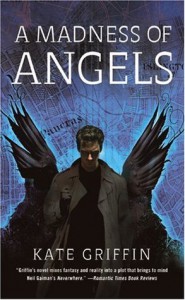
Two years ago, Matthew Swift died.
Our story begins when he comes back to life. A stranger has rented his apartment, he has no money or identification, and it turns out that all his friends have been horribly murdered in the interim.
A lot of this book is descriptive, and although this sometimes dragged from a readerly point of view it fit perfectly with the way magic is envisioned by Griffin. Also, her love of London was obvious, which gave appeal to what would otherwise have been tediously extensive passage of urban description. Griffin really captures the energy of cities; in fact, this book actually made me rather sad because I miss living in the city.
 7
7















 14
14



